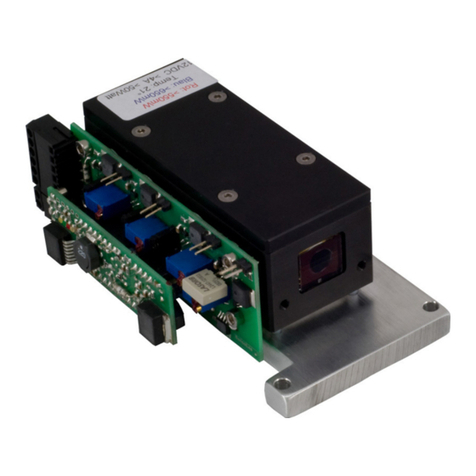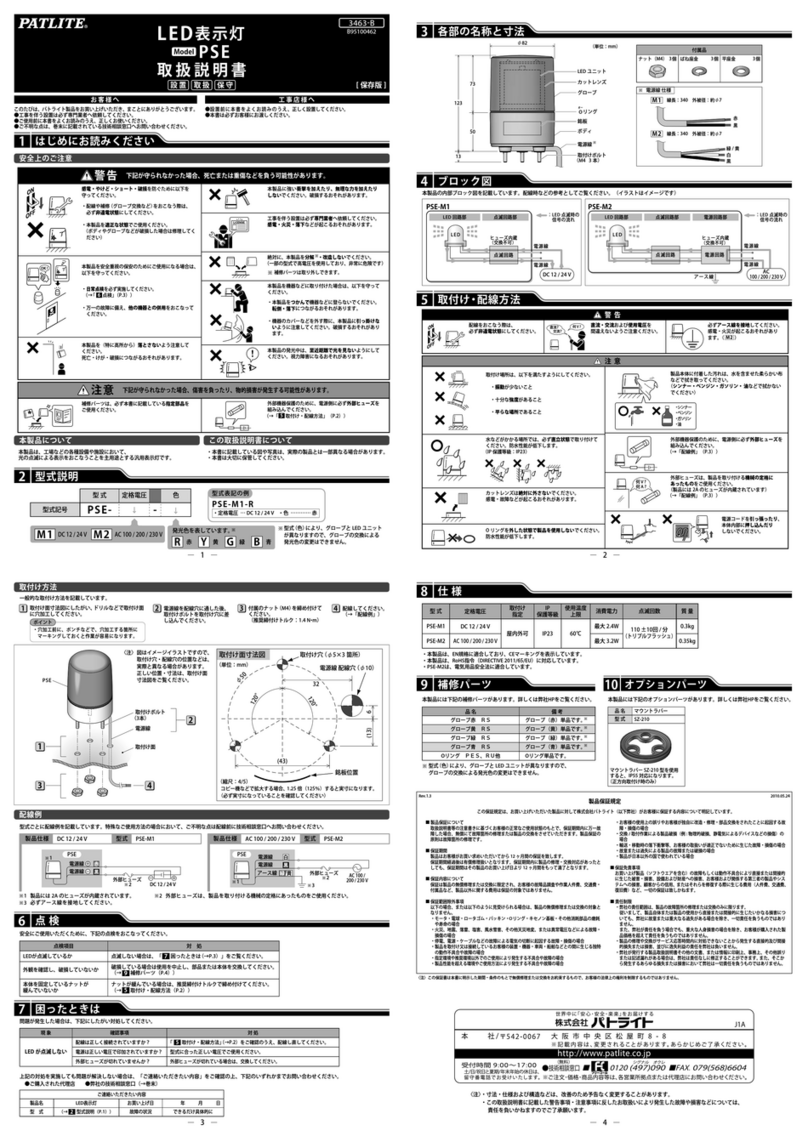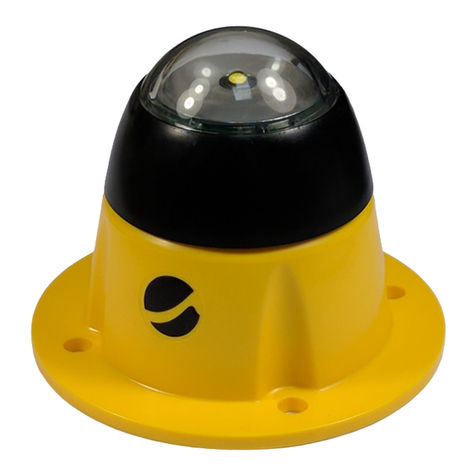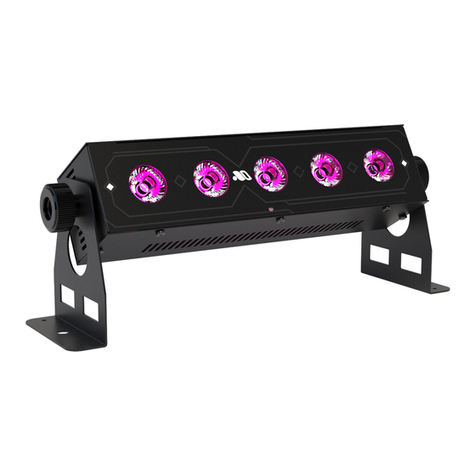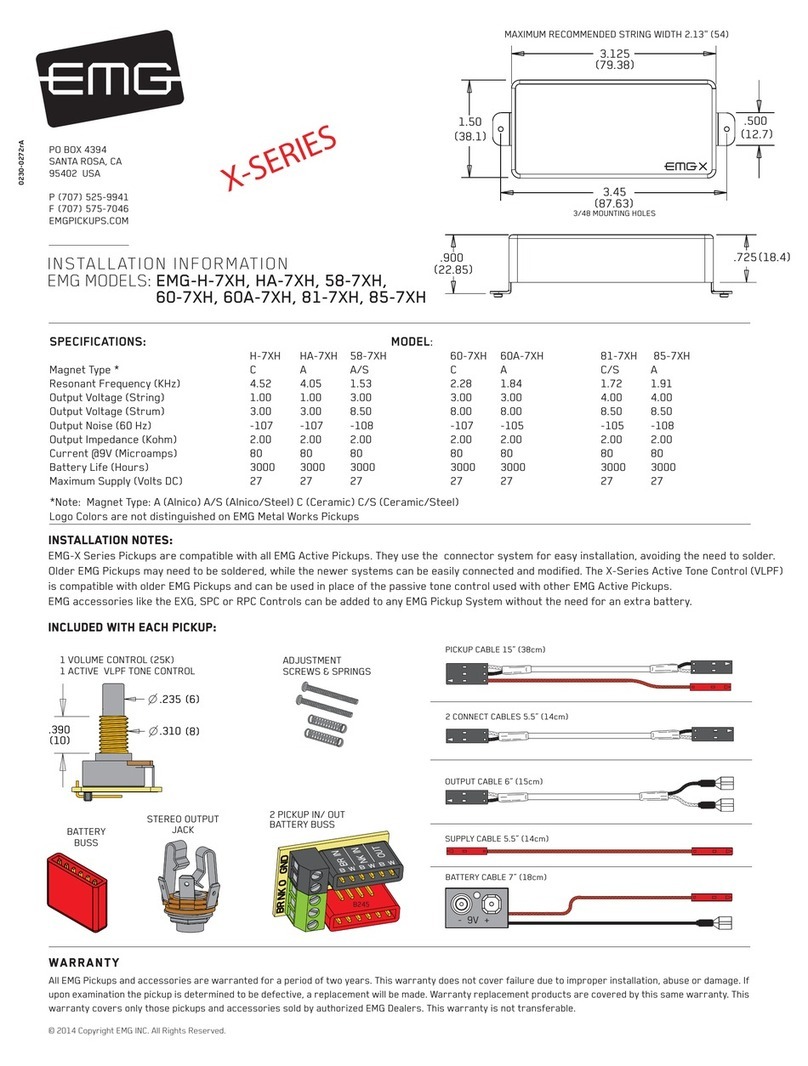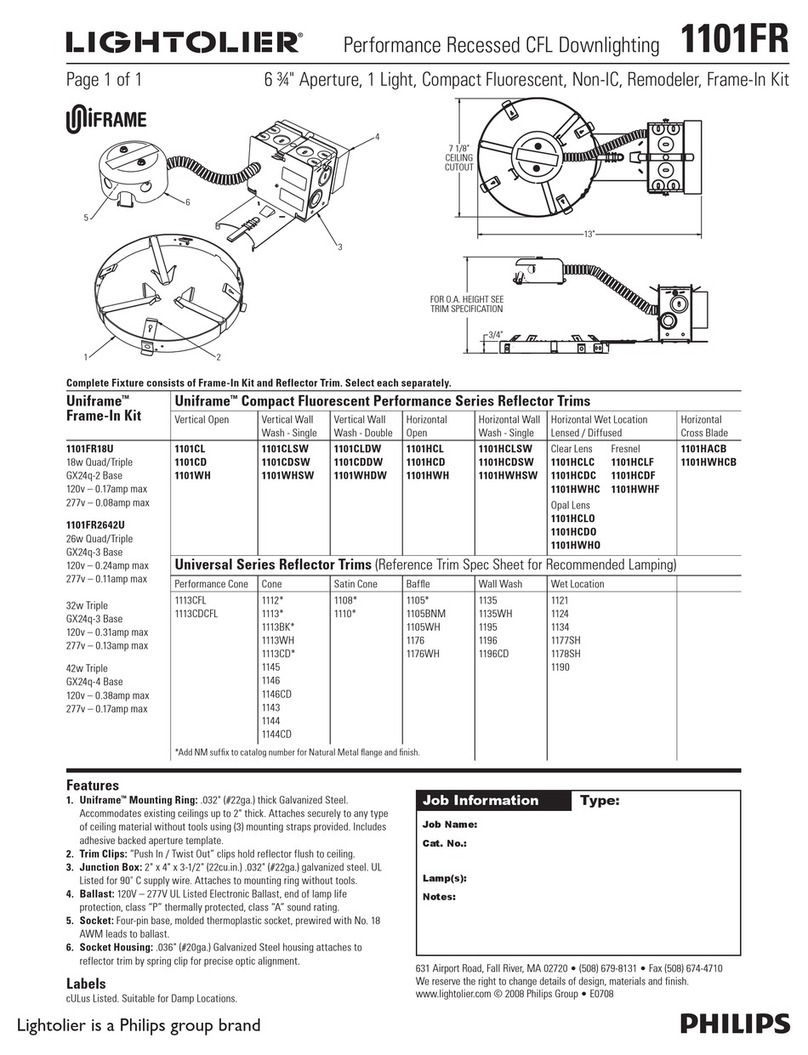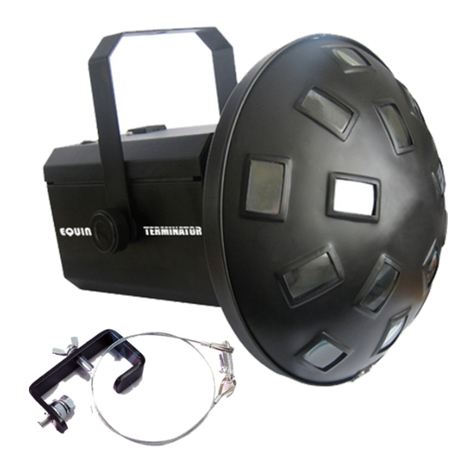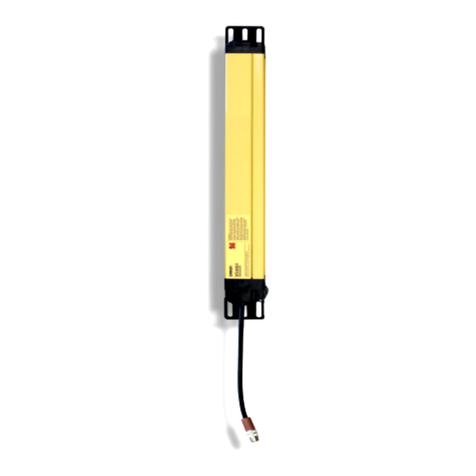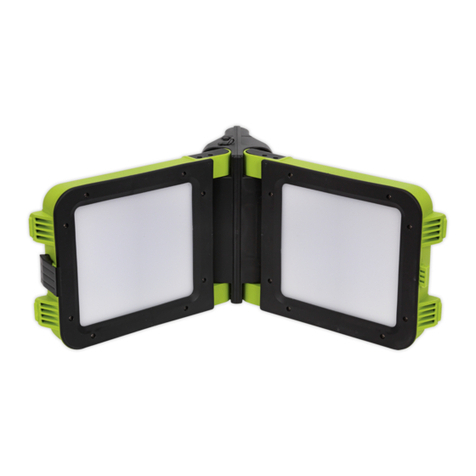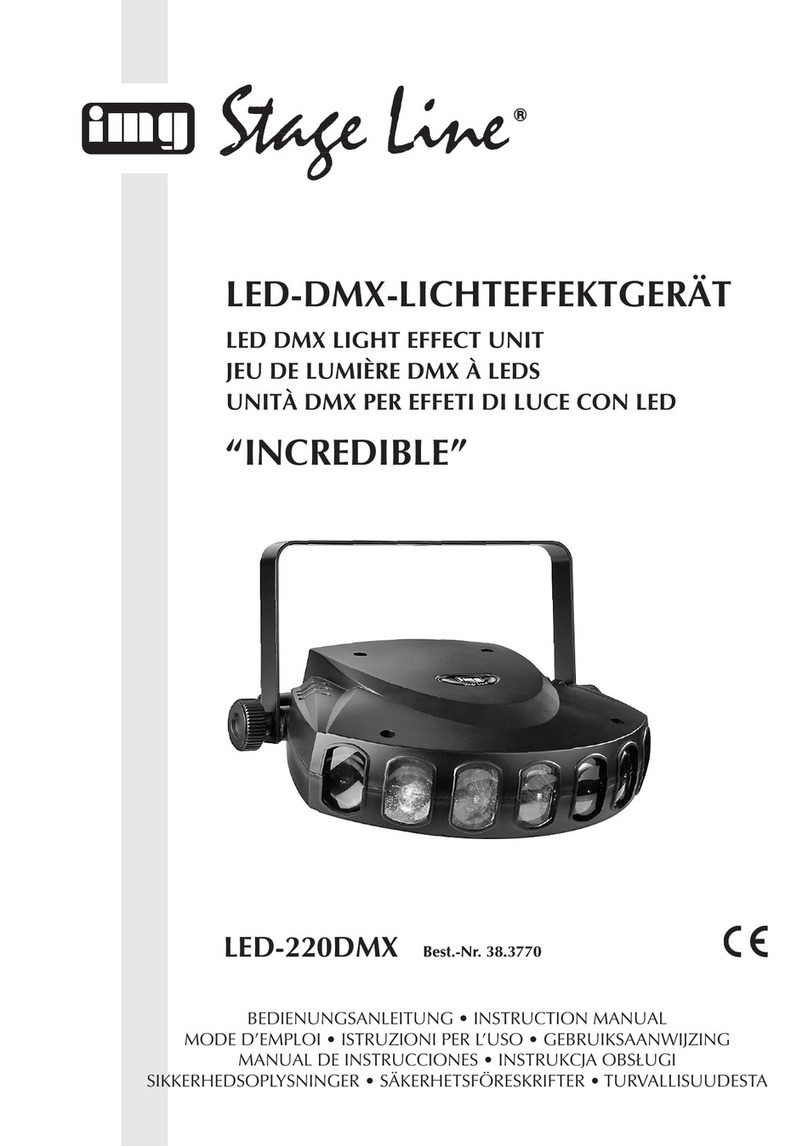Baldor POW'R LITE PL6000K Installation instructions

POW’R LITE PL6000K
Portable Light Tower
Installation & Operating Manual
9/06 MN2488

WARNING:
CALIFORNIA PROPOSITION 65 WARNING:
Engine exhaust from this product contains chemicals known
to the state of California to cause cancer, birth defects and
other reproductive harm.
WARNING:
CALIFORNIA PROPOSITION 65 WARNING:
Battery posts, terminals and related accessories are known to
the state of California to cause cancer, birth defects and other
reproductive harm.

Table of Contents
Table of Contents iMN2488
Section 1
Product Safety Information 1-1. . . . . . . . . . . . . . . . . . . . . . . . . . . . . . . . . . . . . . . . . . . . . . . . . . . . . . . . . . . . . . . . . . . . . . . .
Safety Notice 1-1. . . . . . . . . . . . . . . . . . . . . . . . . . . . . . . . . . . . . . . . . . . . . . . . . . . . . . . . . . . . . . . . . . . . . . . . . . . . . . . . . .
Responsibility 1-1. . . . . . . . . . . . . . . . . . . . . . . . . . . . . . . . . . . . . . . . . . . . . . . . . . . . . . . . . . . . . . . . . . . . . . . . . . . . . . . . .
IMPORTANT SAFETY INSTRUCTIONS 1-2. . . . . . . . . . . . . . . . . . . . . . . . . . . . . . . . . . . . . . . . . . . . . . . . . . . . . . . . . .
Caution Statements 1-6. . . . . . . . . . . . . . . . . . . . . . . . . . . . . . . . . . . . . . . . . . . . . . . . . . . . . . . . . . . . . . . . . . . . . . . . . . . .
Section 2
General Information 2-1. . . . . . . . . . . . . . . . . . . . . . . . . . . . . . . . . . . . . . . . . . . . . . . . . . . . . . . . . . . . . . . . . . . . . . . . . . . . . . .
Limited Warranty 2-1. . . . . . . . . . . . . . . . . . . . . . . . . . . . . . . . . . . . . . . . . . . . . . . . . . . . . . . . . . . . . . . . . . . . . . . . . . . . . . .
Section 3
Receiving & Installation 3-1. . . . . . . . . . . . . . . . . . . . . . . . . . . . . . . . . . . . . . . . . . . . . . . . . . . . . . . . . . . . . . . . . . . . . . . . . . .
Receiving & Inspection 3-1. . . . . . . . . . . . . . . . . . . . . . . . . . . . . . . . . . . . . . . . . . . . . . . . . . . . . . . . . . . . . . . . . . . . . . . . .
Lifting the Light Tower 3-1. . . . . . . . . . . . . . . . . . . . . . . . . . . . . . . . . . . . . . . . . . . . . . . . . . . . . . . . . . . . . . . . . . . . . . . . . .
Installation 3-1. . . . . . . . . . . . . . . . . . . . . . . . . . . . . . . . . . . . . . . . . . . . . . . . . . . . . . . . . . . . . . . . . . . . . . . . . . . . . . . . . . . .
Trailer Checks 3-2. . . . . . . . . . . . . . . . . . . . . . . . . . . . . . . . . . . . . . . . . . . . . . . . . . . . . . . . . . . . . . . . . . . . . . . . . . . . .
Engine/Generator Checks 3-2. . . . . . . . . . . . . . . . . . . . . . . . . . . . . . . . . . . . . . . . . . . . . . . . . . . . . . . . . . . . . . . . . .
Trailer Stabilization Checks 3-2. . . . . . . . . . . . . . . . . . . . . . . . . . . . . . . . . . . . . . . . . . . . . . . . . . . . . . . . . . . . . . . . .
Light Mast Checks 3-2. . . . . . . . . . . . . . . . . . . . . . . . . . . . . . . . . . . . . . . . . . . . . . . . . . . . . . . . . . . . . . . . . . . . . . . . .
Light Fixtures Checks 3-2. . . . . . . . . . . . . . . . . . . . . . . . . . . . . . . . . . . . . . . . . . . . . . . . . . . . . . . . . . . . . . . . . . . . . .
Electrical Systems Checks 3-2. . . . . . . . . . . . . . . . . . . . . . . . . . . . . . . . . . . . . . . . . . . . . . . . . . . . . . . . . . . . . . . . . .
Electrical Connections 3-3. . . . . . . . . . . . . . . . . . . . . . . . . . . . . . . . . . . . . . . . . . . . . . . . . . . . . . . . . . . . . . . . . . . . . .
Battery Connections 3-4. . . . . . . . . . . . . . . . . . . . . . . . . . . . . . . . . . . . . . . . . . . . . . . . . . . . . . . . . . . . . . . . . . . . . . . . . . . .
Section 4
Operation 4-1. . . . . . . . . . . . . . . . . . . . . . . . . . . . . . . . . . . . . . . . . . . . . . . . . . . . . . . . . . . . . . . . . . . . . . . . . . . . . . . . . . . . . . . . .
Preoperational Checklist 4-1. . . . . . . . . . . . . . . . . . . . . . . . . . . . . . . . . . . . . . . . . . . . . . . . . . . . . . . . . . . . . . . . . . . . . . . .
Towing Instructions 4-2. . . . . . . . . . . . . . . . . . . . . . . . . . . . . . . . . . . . . . . . . . . . . . . . . . . . . . . . . . . . . . . . . . . . . . . . . . . . .
Trailer Setup 4-3. . . . . . . . . . . . . . . . . . . . . . . . . . . . . . . . . . . . . . . . . . . . . . . . . . . . . . . . . . . . . . . . . . . . . . . . . . . . . . . . . .
Light Tower Setup 4-4. . . . . . . . . . . . . . . . . . . . . . . . . . . . . . . . . . . . . . . . . . . . . . . . . . . . . . . . . . . . . . . . . . . . . . . . . . . . . .
Engine Controller 4-5. . . . . . . . . . . . . . . . . . . . . . . . . . . . . . . . . . . . . . . . . . . . . . . . . . . . . . . . . . . . . . . . . . . . . . . . . . . . . .
POW’R LITE Operation 4-6. . . . . . . . . . . . . . . . . . . . . . . . . . . . . . . . . . . . . . . . . . . . . . . . . . . . . . . . . . . . . . . . . . . . . . . . .
Light Tower Stow Procedure 4-8. . . . . . . . . . . . . . . . . . . . . . . . . . . . . . . . . . . . . . . . . . . . . . . . . . . . . . . . . . . . . . . . . . . . .
Trailer Setup for Towing 4-8. . . . . . . . . . . . . . . . . . . . . . . . . . . . . . . . . . . . . . . . . . . . . . . . . . . . . . . . . . . . . . . . . . . . . . . . .
Section 5
Troubleshooting and Maintenance 5-1. . . . . . . . . . . . . . . . . . . . . . . . . . . . . . . . . . . . . . . . . . . . . . . . . . . . . . . . . . . . . . . . .
Maintenance 5-1. . . . . . . . . . . . . . . . . . . . . . . . . . . . . . . . . . . . . . . . . . . . . . . . . . . . . . . . . . . . . . . . . . . . . . . . . . . . . . . . . .
General Checks 5-1. . . . . . . . . . . . . . . . . . . . . . . . . . . . . . . . . . . . . . . . . . . . . . . . . . . . . . . . . . . . . . . . . . . . . . . . . . .
Change Engine Oil 5-1. . . . . . . . . . . . . . . . . . . . . . . . . . . . . . . . . . . . . . . . . . . . . . . . . . . . . . . . . . . . . . . . . . . . . . . . .
Check Air Cleaner 5-1. . . . . . . . . . . . . . . . . . . . . . . . . . . . . . . . . . . . . . . . . . . . . . . . . . . . . . . . . . . . . . . . . . . . . . . . .
Flood Light Bulb Replacement 5-1. . . . . . . . . . . . . . . . . . . . . . . . . . . . . . . . . . . . . . . . . . . . . . . . . . . . . . . . . . . . . . . . . . .
Cleaning 5-2. . . . . . . . . . . . . . . . . . . . . . . . . . . . . . . . . . . . . . . . . . . . . . . . . . . . . . . . . . . . . . . . . . . . . . . . . . . . . . . . . . . . . .
POW’R LITE Troubleshooting Guide 5-3. . . . . . . . . . . . . . . . . . . . . . . . . . . . . . . . . . . . . . . . . . . . . . . . . . . . . . . . . . . . .

ii Table of Contents MN2488

Section 1
Product Safety Information
Product Safety Information 1-1MN2488
Safety Notice Be sure that you are completely familiar with the safe operation of this equipment. This
equipment may be connected to other machines that have rotating parts or parts that are
controlled by this equipment. Improper use can cause serious or fatal injury. Always
disconnect all electrical loads before starting the light tower.
Installation and repair procedures require specialized skills with electrical generating equipment
and liquid cooled engine systems. Any person that installs or repairs this light tower must have
these specialized skills to ensure that this generating unit is safe to operate. Seek expert advise
for repairs or any questions about the safe installation and operation of this system.
The precaution statements are general guidelines for the safe use and operation of this light
tower. It is not practical to list all unsafe conditions. Therefore, if you use a procedure that is not
recommended in this manual you must determine if it is safe for the operator and all personnel in
the proximity to the light tower and connected loads. If there is any question of the safety of a
procedure please seek expert advise before starting or stopping the light tower.
This equipment contains high voltages. Electrical shock can cause serious or fatal injury. Only
qualified personnel should attempt the start−up procedure or troubleshoot this equipment.
This equipment may be connected to other machines that have rotating parts or parts that are
driven by this equipment. Improper use can cause serious or fatal injury. Only qualified
personnel should attempt the start−up procedure or troubleshoot this equipment.
−System documentation must be available to anyone that operates this equipment at all
times.
−Keep non-qualified personnel at a safe distance from this equipment.
−Only qualified personnel familiar with the safe installation, operation and maintenance
of this device should attempt start-up or operating procedures.
−Always stop engine before making or removing any connections.
−Always stop engine and allow it to cool before refueling.
Responsibility When your light tower is delivered, it becomes the responsibility of the owner/operator to prevent
unsafe conditions and operation of the equipment. Some responsibilities include (but are not
limited to) the following:
1. It is the responsibility of the owner/operator to ensure that this equipment is correctly
and safely installed.
2. It is the responsibility of the owner/operator to ensure that this equipment, when
installed fully complies with all federal, state and local codes.
3. It is the responsibility of the owner/operator to ensure that any person operating this
equipment has been properly trained.
4. It is the responsibility of the owner/operator to ensure that any person operating this
equipment has access to all manuals and information required for the safe use and
operation of this equipment.
5. It is the responsibility of the owner/operator to ensure that it is properly maintained and
safety inspected at regular scheduled intervals.
6. It is the responsibility of the owner/operator to ensure that any person who has not
been trained on the safe use of this equipment does not have access to this
equipment.
Read This Manual Thoroughly
If you do not understand any concept, any procedure, any safety warning statement, any safety
caution statement or any portion of this manual, seek expert advise. We are happy to make sure
you understand the information in this manual so that you can safely enjoy the full use of this
light tower.

1-2 Product Safety Information MN2488
This symbol is shown throughout the manual to indicate a connection to ground reference point.
Symbols
Indicates a potentially hazardous situation which, if not avoided, could result in injury or death.
Indicates a potentially hazardous situation which, if not avoided, could result in injury or death.
Precaution Statements Used In This Manual
There are three classifications of precautionary statements used in this manual. The most critical
is a WARNING statement, then the Caution statement and the least critical is the Note
statement. The usage of each statement is as follows:
WARNING: Indicates a potentially hazardous situation which, if not avoided, could result in injury or
death.
Caution: Indicates a potentially hazardous situation which, if not avoided, could result in damage to
property.
Note: Additional information that is not critical to the installation or operation.
IMPORTANT SAFETY INSTRUCTIONS
SAVE THESE INSTRUCTIONS −This manual contains important instructions for the light tower that should
be followed during installation, operation and maintenance.
For ease of reading, the Warning statements are divided into four categories: Operation, Burn, Installation,
and Maintenance.
Operation
WARNING: If the trailer is not properly secured to the tow vehicles tow hitch, the trailer may separate
from the tow vehicle and cause severe injury or property damage. Always ensure that the tow
hitch and trailer tongue are properly connected, in good working condition and that safety
chains are properly connected from the trailer to the tow vehicle.
WARNING: Never allow a person to ride in or on a trailer that is being towed. All states prohibit
passengers in towed vehicles. A person can fall off and be struck by another vehicle or run
over by the towed trailer. Failure to observe this warning can result in death.
WARNING: Before using a tow vehicle, verify that the vehicle is designed for the load. Using a vehicle
that is too small is very dangerous. Be certain that it can handle the M.G.V.W. (Maximum
Gross Vehicle Weight) and the tongue weight for safe towing and braking.
WARNING: For a new trailer, the wheel lug nuts should be tightened to the proper torque specification
before use, after 50 miles of operation and every 100 miles of operation thereafter. Failure to
check the lug nuts for proper tightness can result in an accident due to a wheel falling from
the trailer.
WARNING: Never operate a trailer or tow vehicle that has a loose, missing or broken lug nut. The trailer
is designed for safe operation with all lug nuts installed and all at the proper torque rating.
Operating the trailer with one or more broken or missing lug nuts greatly increases the load
on the remaining nuts and can cause failure of the remaining nuts that can result in an
accident due to a wheel falling from the trailer.
WARNING: Maximum safe highway speed for towing the light tower is 55 miles per hour. Excessive
speed or improper towing may result in an accident or damage.
WARNING: When erecting or stowing the mast assembly, be aware of the pinch points such as where the
tower structures join or where the cable and winch are located. Careless operation can result
in injury. Keep extremities away from moving parts to avoid injury.
WARNING: Before erecting the mast assembly, be certain that the outriggers are properly set to stabilize
the light tower and that they are secure and are not damaged. Erecting the mast without
setting the outriggers can cause the light tower to tip over when raising the mast.
WARNING: Before erecting the mast assembly, be certain that there are no overhead wires. Contact with
overhead wiring presents an electrical shock hazard that may cause severe injury or death.
WARNING: Before erecting the mast assembly, be certain that there are no overhead obstructions that
the mast will hit when raising it. Hitting an object (tree limb etc.) may damage the mast or
cause the light tower to tip over and may result in injury or property damage.
Continued on next page.

Product Safety Information 1-3MN2488
Operation Warning Statements Continued
WARNING: The mast assembly must remain in the stowed position until the outriggers are properly set to
stabilize the trailer . Erecting the mast without setting the outriggers can cause the light
tower set to tip over when raising the mast.
WARNING: Never attempt to move the POW’R LITE when the mast is in the vertical position. All
Outrigger and trailer jacks must remain in position and the trailer level until the mast is in its’
stowed position. Failure to follow this warning may result in severe injury and property
damage if the trailer tips over.
WARNING: Never move or reposition a light tower when the mast is extended or in the vertical position.
Unless the mast is in its stowed position, it may contact overhead wires or cause the light
tower to be unbalanced or tip over.
WARNING: Gasoline and diesel fuel are flammable and can cause fire, explosions, injury or death. For
storage or refueling handle fuel with care and only in clean, approved, properly marked safety
fuel containers.
WARNING: Do not overfill the fuel tank. Only fill the tank to within 1/2
,of the top of the tank to allow
space for fuel expansion. Overfilling of tank may cause fuel to spill out onto engine and
cause fire or explosion.
WARNING: Clean up fuel spills by wiping completely dry before starting engine. Gasoline and diesel fuel
are flammable and can cause fire, explosions, injury or death.
WARNING: Make sure the fuel cap is completely and securely closed after refueling to prevent spillage.
Gasoline and diesel fuel are flammable and can cause fire, explosions, injury or death.
WARNING: Never operate this light tower in a manner other than as described in this manual. Operation
in any manner not described in this manual should be considered unsafe and should not be
attempted. Never start the engine unless you have first verified that the installation and
operation of the light tower are as described in this manual.
WARNING: Be sure that you are completely familiar with the safe operation of this equipment. This
equipment may be connected to other machines that have rotating parts or parts that are
controlled by this equipment. Improper use can cause serious or fatal injury.
WARNING: Exhaust fumes/gases are extremely dangerous and can cause severe illness or death. Never
breathe exhaust fumes produced by a running engine. Only run the engine outdoors where
ventilation is plentiful. Exhaust gases contain carbon monoxide, a colorless, odorless and
extremely dangerous gas that can cause unconsciousness or death. Symptoms of carbon
monoxide poisoning include: dizziness, nausea, headaches, sleepiness, vomiting or
incoherence. If you or anyone else experiences these symptoms, get out into fresh air
immediately. Stop the engine and do not restart the engine until it has been inspected and if
necessary repaired or reinstalled in a well ventilated area.
WARNING: Hot exhaust gasses must never be directed toward anything that may catch fire or explode.
WARNING: This light tower must not be used on or near any forest covered, brush covered, or grass
covered land unless the engine’s exhaust system is equipped with a spark arrestor. The
spark arrestor must be maintained in effective working order by the operator.
WARNING: Never move a light tower that is running. Hazards are caused by moving a light tower that is
running.
WARNING: Always wear safety glasses with side shields and hearing protection when working near the
light tower.
WARNING: Some parts of this light tower rotate during operation. Rotating parts can present extreme
danger if clothing or body extremities are caught by the rotating part and can cause serious
or fatal injury. Never touch a part of the light tower until the engine has been stopped and all
rotating parts are completely stopped. Also, disconnect the battery terminals to prevent
accidental engine rotation during servicing.
WARNING: Be sure that you understand how to stop the engine quickly in case of an emergency situation.
Become familiar with the controls and safety systems provided with this light tower.
WARNING: Improper operation may cause violent motion of connected equipment. Be certain that
unexpected movement will not cause injury to personnel or damage to equipment.
WARNING: Never operate the light tower indoors or in a poorly ventilated area such as a tunnel or cave.
Exhaust fumes are extremely dangerous to all personnel that are in or in contact with that
area.
Continued on next page.

1-4 Product Safety Information MN2488
Operation Warning Statements Continued
WARNING: Never allow children or pets to be in the area where the light tower is running. The light tower
and the equipment being powered by the light tower may cause injury or death.
WARNING: Never operate the light tower unless all guards, covers, shields and other safety items are
properly installed.
WARNING: Never permit anyone to operate the light tower without proper instructions. Be sure to keep a
copy of this manual with the unit so that all users can be properly informed of its safe
operation.
WARNING: Do not put hands, feet, tools clothing or other objects near rotating parts such as drive shaft,
pulley, belt etc. Rotating parts cause extremely dangerous situations because they can catch
loose clothing or extremities and cause serious or fatal injury.
WARNING: When operating this light tower remain alert at all times. Never operate machinery when
physically or mentally fatigued, or while under the influence of alcohol, drugs or medication.
WARNING: Never operate the engine when the air cleaner is removed. An engine backfire can cause
serious burns.
WARNING: Never “jump start” a light tower to start the engine. If the battery charge is insufficient to
start the engine, charge or replace the battery and try to restart. Jump starting a battery can
cause the battery to explode and cause severe injury or death to anyone in the area.
WARNING: High voltage is present whenever engine is running. Electrical shock can cause serious or
fatal injury. Never operate electrical equipment while standing in water, on wet ground or with
wet hands, feet or shoes or while barefoot.
WARNING: High voltage is present whenever the engine is running. Electrical shock can cause serious
or fatal injury.
WARNING: Do not smoke near light tower during operation or while refueling. Gasoline and diesel fuel
are flammable and can cause fire, explosions, injury or death.
WARNING: Stop engine and allow engine to cool before refueling. Gasoline and diesel fuel are flammable
and can cause fire, explosions, injury or death.
WARNING: Never store an engine with fuel in its tank indoors or in an enclosed, poorly ventilated area
where gasoline fumes could reach an ignition source and cause an explosion. Fumes may
reach an open flame, electrical spark or pilot light as on a furnace, water heater, clothes dryer,
etc. Gasoline and diesel fuel are flammable and can cause fire, explosions, injury or death.
WARNING: Operate the light tower only on a level surface. If the light tower is tilted during operation,
fuel spillage may result. Gasoline and diesel fuel are flammable and can cause fire,
explosions, injury or death.
WARNING: Keep light tower at least three feet away from buildings and other structures.
WARNING: Keep light tower away from flammable or hazardous materials (trash, rags, lubricants,
explosives, paints etc.) and grass or leaf build up.
WARNING: Keep a fire extinguisher near the light tower during use. An extinguisher rated “ABC” by the
National Fire Protection Association is appropriate.
Burn
WARNING: Light fixtures become extremely hot during use. To prevent severe burns, do not touch light
fixtures, bulbs or other components until they have cooled and no longer present a burn hazard.
Wear protective clothing when placing the tower in the stowed position after use and do not allow
any person to touch the light fixtures.
WARNING: Do not touch the hot exhaust parts. In addition to a severe burn, the sudden involuntary jerk
of the hand or body part caused by contact with high voltage or a hot surface can result in
injury to yourself or others.
WARNING: Parts of this light tower are extremely hot during and after operation. To prevent severe
burns, do not touch any part until you have first determined if the part is hot. Wear protective
clothing and after use allow sufficient time for parts to cool before touching.
WARNING: Engine coolant is under pressure and is near the boiling point of water when engine is hot.
Do not open the coolant system until the engine has completely cooled. Hot coolant can
cause severe burns and other injuries. When engine is cool, coolant level can be checked.
Continued on next page.

Product Safety Information 1-5MN2488
Warning Statements Continued
Installation
WARNING: Installation and servicing of batteries is to be performed or supervised by personnel
knowledgeable of batteries and the required precautions. Keep unauthorized personnel away
from batteries.
WARNING: Installation and repair procedures requires specialized skills with electrical generating
equipment and small engine systems. Any person that installs or performs repairs must have
these specialized skills to ensure that the light tower is safe to operate.
WARNING: Be sure all wiring complies with the National Electrical Code (NEC) and all regional and local
codes or CE Compliance. Improper wiring may cause a hazardous condition and exposure to
electrical hazards can cause serious injury or death.
WARNING: Be sure the system is properly grounded before applying power. Do not apply AC power
before you ensure that grounds are connected. Electrical shock can cause serious or fatal
injury. NEC requires that the frame and exposed conductive surfaces (metal parts) be
connected to an approved earth ground. Local codes may also require proper grounding of
light tower systems.
Warning: Do not connect the generator output neutral to the frame or local ground. The generator
output is isolated from ground. NEC and local codes require that the generator output remain
isolated from local ground reference.
WARNING: Place protective covers over all rotating parts such as drive shaft, pulley, belt etc. Rotating
parts cause extremely dangerous situations because they can catch loose clothing or
extremities and cause serious or fatal injury.
WARNING: Unauthorized modification of a light tower may make the unit unsafe for operation or may
impair the operation of the unit. Never start a light tower that has been modified or tampered
with. Be sure that all covers and guards are properly installed and that the unit is safe before
starting the engine. If you are unsure, seek expert advise before starting the engine.
WARNING: When transporting a light tower, secure the unit to prevent movement during transport.
WARNING: Never connect this light tower to any buildings electrical system unless a licensed electrician
has installed an approved transfer switch. The National Electrical Code (NEC) requires that
connection of a generator to any electrical circuit normally powered by means of an electric
utility must be connected by means of approved transfer switch equipment so as to isolate
the electrical circuit from the utility distribution system during operation. Failure to isolate
the electrical circuits by such means may result in injury or death to utility power workers due
to backfeed of electrical energy onto the utility lines.
WARNING: Circuit overload protection must be provided in accordance with the National Electrical Code
and local regulations.
WARNING: Check Ground Fault Circuit Interrupt (GFCI) receptacles monthly by using the “Test” and
“Reset” buttons.
Maintenance
WARNING: Installation and servicing of batteries is to be performed or supervised by personnel
knowledgeable of batteries and the required precautions. Keep unauthorized personnel away
from batteries.
WARNING: Disconnect the battery’s ground terminal before working in the vicinity of the battery or
battery wires. Contact with the battery can result in electrical shock when a tool accidently
touches the positive battery terminal or wire. The risk of such shock is reduced when the
ground lead is removed during installation and maintenance.
WARNING: A battery presents a risk of fire and explosion because they generate hydrogen gas.
Hydrogen gas is extremely explosive. Never jump start a battery, smoke in the area around
the battery or cause any spark to occur in the area around the battery.
WARNING: Do not mutilate the battery or dispose of a battery in a fire. The battery is capable of
exploding. If the battery explodes, electrolyte solution will be released in all directions.
Battery electrolyte solution is caustic and can cause severe burns and blindness. If
electrolyte contacts skin or eyes, immediately flush the area with water and seek medical
attention quickly.
Continued on next page.

1-6 Product Safety Information MN2488
Maintenance Statements Continued
WARNING: A battery presents a risk of electrical shock hazard and high short circuit current. Electrical
shock can cause serious or fatal injury. Never wear jewelry, watch or any metal objects when
in the area around the battery.
WARNING: The battery electrolyte is a dilute sulfuric acid that is harmful to the skin and eyes. It is
electrically conductive and corrosive. If electrolyte contacts the skin, flush the area
immediately with water and wash it off using soap and water. If electrolyte contacts the eyes,
immediately flush the eye thoroughly with water and seek medical attention quickly.
WARNING: Before cleaning, inspecting, repairing, refueling or performing any maintenance to the light
tower, always be sure the engine has stopped and that all rotating parts have also stopped.
After stopping, certain components are still extremely hot so be careful not to get burned.
WARNING: Before servicing the light tower, be sure to disconnect the battery terminals to prevent
accidental engine rotation or starting.
WARNING: Inspect all wiring frequently and replace any damaged, broken or frayed wiring or wires with
damaged insulation immediately. Electrical shock can cause serious or fatal injury.
WARNING: Disconnect all electrical wires and load devices from light tower power outlets before
servicing the light tower. Electrical shock can cause serious or fatal injury. Always treat
electrical circuits as if they are energized.
WARNING: Check fuel tank, fuel line, and connections monthly for fuel leaks. Diesel is flammable and
can cause fire, explosions, injury or death. If a leak is found, replace only with approved pipe
or components.
WARNING: Never store an engine with fuel in its tank indoors or in an enclosed, poorly ventilated area
where gasoline fumes could reach an ignition source and cause an explosion.
Caution Statements
Caution: Never start the engine with any of the lights on, or with any electrical load connected, as
damage to the light tower may result.
Caution: Never stop the engine with any of the lights on, or with any electrical load connected, as
damage to the light tower may result.
Caution: Careless handling or storage of the light fixtures can damage the fixtures, lenses, and/or bulbs.
Caution: Do not overfill the engine oil. Serious damage to the engine can result from overfilling the oil.
Caution: Never use explosive engine starting fluids. Please read the engine manual and unit placards
carefully before starting the engine. Starting fluids are not compatible with the preheat cycle.
Caution: Do not operate preheat for more than 30 seconds or the heating element may be damaged.
Caution: Do not engage the starter motor for more than 60 seconds at a time or damage may result.
Caution: Before towing, be sure that the jack and outriggers are properly and securely stowed for
travel to prevent trailer damage.
Caution: Do not apply high voltage to windings (start the light tower) in a moisture−saturated
condition. Moisture can cause insulation breakdown, making it necessary to return the light
tower to the factory for repair, and consequent expense and loss of time.
Caution: Use only original equipment or authorized replacement parts. Using the correct parts will
assure continued safe operation as designed.
Caution: Do not tamper with or change the engine speed. Engine speed is factory set to produce the
correct voltage and output frequency.
Caution: Never operate the engine without a muffler and spark arrestor. The engine is designed to
have the correct exhaust components installed. Operating without these components can
present a fire hazard, cause excessive exhaust gases and cause damage to engine.
Caution: Operate the light tower only on a level surface. Operation of the light tower on an incline or
slope may degrade engine lubrication and result in engine failure.
Caution: Always fill fuel tank with clean fresh fuel before use. Never leave fuel in tank for long storage
periods. Old fuel becomes stale and can damage the fuel system causing the engine not to
start. Always drain the fuel tank after use before storage.

Section 2
General Information
General Information 2-1MN2488
Thank you for purchasing your Baldor POW’R LITE Light Tower. This manual contains information you need to safely
and efficiently install and operate your system. During the preparation of this manual every effort was made to ensure the
accuracy of its contents. This manual describes only very basic engine information. A separate owner’s manual for the
engine is supplied with this unit for your use. Please refer to the engine manual for information relative to engine
operation, maintenance, recommendations and additional safety warnings.
Copyright Baldor E2006. All rights reserved.
This manual is copyrighted and all rights are reserved. This document may not, in whole or in part, be copied or
reproduced in any form without the prior written consent of Baldor Electric Company, Inc.
Baldor Generators have earned the reputation of being high quality and dependable. We take pride in this fact and
continue to keep our quality standards high on our list of priorities. We are also constantly researching new technological
ideas to determine if they could be used to make our generator sets even better.
Baldor makes no representations or warranties with respect to the contents hereof and specifically disclaims any implied
warranties of fitness for any particular purpose. The information in this document is subject to change without notice.
Baldor assumes no responsibility for any errors that may appear in this document.
Limited Warranty
Baldor will replace or repair free of charge any part or parts of the generator of their manufacture that are defective in
workmanship and materials for a period of time as set forth in the Warranty Period chart below. All Baldor products
requiring warranty service shall be transported or shipped freight pre−paid to a Baldor Generator repair facility.
Notification of the defect or problem, a description of the manner in which the Baldor generator is used, and the name,
address and telephone number of the customer requiring warranty service must be included. Baldor is not responsible for
removal and shipment of the Baldor product to the service center or for the reinstallation of the Baldor product upon its
return to the customer, or any incidental or consequential damages resulting from the defect, removal, reinstallation,
shipment or otherwise. Problems with Baldor products can be due to improper maintenance, faulty installation,
non−Baldor additions or modifications, or other problems not due to defects in Baldor workmanship or materials. If a
Baldor Generator repair facility determines that the problem with a Baldor product is not due to defects in Baldor
workmanship or materials, then the customer will be responsible for the cost of any necessary repairs. Genset engines
are covered under the engine manufacturers warranty. Proper engine maintenance is required. Any request for engine
warranty or repair should be made directly with the engine manufacturers warranty center. See engine manufacturers
data for applicable engine warranty periods and location of repair centers. This Limited Warranty and Service Policy
represents Baldor’s sole and exclusive warranty obligation with respect to Baldor products. Baldor’s liability to a customer
or any other person shall not exceed Baldor’s sales price of the applicable Baldor product. BALDOR DISCLAIMS ALL
OTHER EXPRESSED AND IMPLIED WARRANTIES INCLUDING THE IMPLIED WARRANTIES OF FITNESS FOR A
PARTICULAR PURPOSE AND MERCHANTABILITY.
Warranty Period
Generator Series Labor* Parts
Portable Products (Premier, Powerchief,
DG Series)
1 Year 3 Years
Towable Products (TS) 1 Year or 3,000 Hours 3 Years or 3,000 Hours
POW’R LITE Light Towers 1 Year or 3,000 Hours 3 Years or 3,000 Hours
Light Fixture, Lamps and Ballasts are excluded
from any warranty coverage
3600 RPM Standby Systems
(Some AE Models)
1 Year or 1,000 Hours 3 Years or 1,000 Hours
1800 RPM Standby Systems
(Some AE Models, DLC, GLC)
1 Year or 3,000 Hours 3 Years or 3,000 Hours
Industrial Standby Systems 1 Year or 1,000 Hours 2 Years or 1,000 Hours
Industrial Prime Power Systems 1 Year or 1,000 Hours 1 Year or 1,000 Hours
International 1 Year or 1,000 Hours 1 Year or 1,000 Hours
*For products covered under labor coverage, travel expenses will be allowed up to 7 hours straight labor or 300 miles,
whichever occurs first, and only applies to permanently wired and mounted products (AE, DLC, GLC, IDLC).
You must save the purchase receipt. Proof of purchase, date, serial number and model number will be required for all
portable and Towable products to qualify for any warranty consideration.
A start−up inspection form/warranty registration must be completed in its entirety and submitted to Baldor Generators
within 30 days of start−up to qualify for any warranty consideration, excluding: Portables, Towables and Light Towers.

2-2 General Information MN2488

Section 3
Receiving & Installation
Receiving & Installation 3-1MN2488
Receiving & Inspection When you receive your light tower, there are several things you should do immediately.
1. Observe the condition of the light tower and report any damage immediately to the
carrier that delivered your system.
2. Verify that the part number of the system you received is the same as the part number
listed on your purchase order.
3. If the system is to be stored for several weeks before use, be sure that it is stored in a
location that conforms to published storage temperature and humidity specifications.
Lifting the Light Tower When lift or hoist equipment is used to lift the light tower and move it to position, be
careful not to contact overhead wires or other obstacles. The unit can weigh as much as 2,000
lbs. Be sure lift or hoist equipment has appropriate tires for the terrain to avoid becoming stuck
or tipping over. The lift slots are designed for use with a fork lift. A spreader bar and chains
(see Figure 3-1) can also be used.
Installation The light tower is delivered completely assembled, tested and ready for use. No assembly is
required. However, before putting the light tower to use the system should be completely
checked to ensure it is ready for operation. See Figure 3-1.
The light tower (unit) has six major systems that will be checked individually before use, these
are:
1. Trailer
2. Engine/Generator
3. Trailer Stabilization System
4. Light Mast
5. Light Fixtures
6. Electrical Systems
Figure 3-1 POW’R LITE Component Identification
Jack
Coupler
Coupler Handle
Safety
Chains
Light Mast
Trailer
Outriggers
Light
Fixtures
Trailer
Muffler
Lift
Slots
Tilt
Winch
Lift
Winch
Outriggers Extended
Tilt Lock
Mast
Lock
Engine/Generator
Compartment
If a fork lift is not available to lift the light tower,
use spreader bars, chains eyehooks and other
hardware that is of sufficient strength to lift at
least three times the weight of the unit.
Tow
Bar
Lift
Slot
Lift
Slot

3-2 Receiving & Installation MN2488
These checks should be performed before first service, after 25 hours of operation and every 100
operating hours thereafter.
Trailer Checks Single axle trailer with leaf springs and two tires.
1. Verify that the hitch mechanism on the trailer opens and closes freely and is securely
fastened to the trailer tongue.
2. Verify that the safety chains are securely fastened to the trailer tongue.
3. Verify that the trailer lighting connector and harness are present and are not damaged
(see Figure 3-3).
4. Verify that tailer lights are not broken or damaged.
5. Verify that the trailer tires are properly inflated (32 psi).
6. Verify that the lug nuts for each wheel are properly torqued to 90 lb−ft.
7. Verify that the enclosure is securely fastened to the trailer frame.
Ensure that all bolts, nuts and other hardware are tight and not missing.
Engine/Generator Checks A 3−cylinder liquid cooled diesel engine and 4 pole, brushless, 6,000 watt generator.
1. Refer to the engine manual for maintenance check procedures to ensure all fluid levels
are correct before each use.
2. Verify that electrical receptacles, switches and circuit breakers are not damaged.
Trailer Stabilization Checks Consists of 2 rear mounted outrigger assemblies and the jack on the trailer tongue.
1. Verify that the jack rotates and locks into position.
2. Ensure that all bolts, nuts and other hardware are tight and not missing.
3. Verify that the rear outriggers extend and rotate into position.
4. Ensure that the lock mechanisms operate correctly.
Light Mast Checks A 4 section 30 foot mast can be rotated 360 degrees.
1. Ensure that all bolts, nuts and other hardware are tight and not missing.
2. Verify that the cables for Tilt and Lift winches are not frayed or damaged.
3. Verify that the Tilt and Lift winches are not damaged.
4. Verify that the Tilt Lock and Mast Lock hardware is present and not damaged.
Light Fixtures Checks
1. Ensure that all bolts, nuts and other hardware are tight and not missing.
2. Verify that the electrical cables are not frayed or damaged.
3. Verify that the light bulbs, covers and other hardware are not damaged.
Electrical Systems Checks
Verify that the wiring cables, switches etc. are not damaged.

Receiving & Installation 3-3MN2488
Electrical Connections Class 1 wiring methods must be used for field wiring connections to terminals of a class 2
circuit. It is the responsibility of the owner/operator to arrange for these procedures to be
performed by a licensed electrical contractor and ensure conformance to all applicable codes
including local codes peculiar to your municipality/city/county and state. Wire size and insulation
type should be as required by NEC (National Electrical Code) and local codes.
Warning: Never connect this light tower to the electrical system of any building unless a licensed
electrician has installed an approved transfer switch. The national electrical code (NEC)
requires that connection of a generator to any electrical circuit normally powered by means of
an electric utility must be connected by means of approved transfer switch equipment to
isolate the electrical circuit from the utility distribution system when the unit is operating.
Failure to isolate the electrical circuits by such means may result in injury or death to utility
power workers due to backfeed of electrical energy onto the utility lines.
Intended Use The intended purpose of this light tower is to provide portable lighting where main utility power
supply is not available. It is not intended to connect to a building’s wiring system.
Protection Single Phase circuit protection is provided within the light tower.
Electrical Outlets The electrical panel provides a duplex 120V, 20A GFCI receptacle and a 240V, 30A twist lock
receptacle. Both receptacles may be used at the same time as the Light Mast provided the total
electrical load does not exceed the generators rated output. GFCI (Ground Fault Circuit
Interrupter) provides ground fault protection.
Frame Ground Connection
WARNING: Be sure the system is properly grounded before applying power. Do not apply AC power
before you ensure that grounds are connected. Electrical shock can cause serious or fatal
injury. NEC requires that the frame and exposed conductive surfaces (metal parts) be
connected to an approved earth ground. Local codes may also require proper grounding of
light tower systems.
The NEC requires that the frame and exposed metal surfaces be at local ground reference
potential to avoid electrical shock hazard. A local ground reference may require a driven earth
ground conductor at the job site. Make the ground connection as shown in Figure 3-2. Use the
appropriate size wire as required by NEC and local codes.
Figure 3-2 Frame Ground Connection
Earth Ground
Frame
Stud
Washer
Ground Wire Lug
Nut
Washer

3-4 Receiving & Installation MN2488
Battery Connections
WARNING: Removal, installation and servicing of batteries is to be performed or supervised by personnel
knowledgeable of batteries and the required precautions. Keep unauthorized personnel away
from batteries.
WARNING: Do not mutilate the battery or dispose of a battery in a fire. The battery is capable of
exploding. If the battery explodes, electrolyte solution will be released in all directions.
Battery electrolyte solution is caustic and can cause severe burns and blindness. If
electrolyte contacts skin or eyes, immediately flush the area with water and seek medical
attention quickly.
WARNING: A battery presents a risk of electrical shock hazard and high short circuit current. The
following precautions are to be followed when working on batteries:
1. Remove watches, rings, necklaces and all other metal objects.
2. Use tools with insulated handles.
3. Wear rubber gloves and boots.
WARNING: The battery electrolyte is a dilute sulfuric acid that is harmful to the skin and eyes. It is
electrically conductive and corrosive. The following precautions are to be followed when
working on batteries:
1. Wear full eye protection (safety glasses or goggles) and protective clothing.
2. Where electrolyte contacts the skin, flush the area immediately with water and wash it
off using soap and water.
3. Where electrolyte contacts the eyes, immediately flush the eye thoroughly with water
and seek medical attention quickly.
4. Spilled electrolyte is to be washed down with an acid neutralizing agent. A common
practice is to use a solution of one pound (500 grams) bicarbonate of soda to one
gallon (four liters) of water. The bicarbonate solution is to be added until evidence of
reaction (foaming) has ceased. The resulting liquid is to be flushed with water and the
area dried.
WARNING: A battery presents a risk of fire because they generate hydrogen gas. Hydrogen gas is
extremely explosive. Never jump start a battery, smoke in the area around the battery or
cause any spark to occur in the area around the battery. The following precautions are to be
followed when working on batteries:
1. Do not smoke when near batteries.
2. Do not cause flame or spark in battery area.
3. Discharge static electricity from body before touching batteries by first touching a
grounded metal surface.
WARNING: Disconnect the battery’s ground terminal before working in the vicinity of the battery or
battery wires. Contact with the battery can result in electrical shock when a tool accidently
touches the positive battery terminal or wire. The risk of such shock is reduced when the
ground lead is removed during installation and maintenance.
Procedure: The correct type battery must be installed in the battery compartment provided. Installation and
servicing of batteries is to be performed or supervised by personnel knowledgeable of batteries
and the required precautions.
Keep unauthorized personnel away from batteries.
1. Open access doors and locate battery tray.
2. Remove the old battery.
3. Install the new battery.
4. Connect the positive lead to the positive (+) battery terminal.
5. Connect the negative lead to the negative (−) battery terminal.
6. Do not lay tools or metal parts on top of batteries.

Receiving & Installation 3-5MN2488
Figure 3-3 Trailer Harness

3-6 Receiving & Installation MN2488

Section 4
Operation
Operation 4-1MN2488
Preoperational Checklist
Before the POW’R LITE is put into service, the items in Table 4-1 must be checked.
Table 4-1 Pre−Operation Checklist
-Check unit for obvious structural damage.
-Make sure light mast is secure.
-Check that light fixtures are secured in place.
-Check that front and rear jacks are secure into position and operate properly.
-Inspect tires for damage.
-Make sure tires are inflated to 32 psi and that lug bolts are tightened to 90 lb−ft.
-Inspect engine/generator parts for any obvious damage or loose parts.
-Inspect control panel for damage or loose fasteners.
-Inspect mast wiring for cuts, abrasions, and loose connections.
-Check light fixtures for lamp, reflectors, and lens damage.
-Inspect both winches, cables, cable clamps, and pulleys for damage and proper operation.
Figure 4-1 POW’R LITE Component Identification
Jack
Coupler
Coupler Handle
Safety
Chains
Light Mast
Trailer
Outriggers
Light
Fixtures
Trailer
Muffler
Lift
Slots
Tilt
Winch
Lift
Winch
Tilt Lock
Mast
Lock
Engine
Compartment
Tow
Bar
Lift
Slot
Lift
Slot

4-2 Operation MN2488
WARNING: If the trailer is not properly secured to the tow vehicles tow hitch, the trailer may separate
from the tow vehicle and cause severe injury or property damage. Always ensure that the tow
hitch and trailer tongue are properly connected, in good working condition and that safety
chains are properly connected from the trailer to the tow vehicle.
WARNING: Never allow a person to ride in or on a trailer that is being towed. All states prohibit
passengers in towed vehicles. A person can fall off and be struck by another vehicle or run
over by the towed trailer. Failure to observe this warning can result in death.
WARNING: Before using a tow vehicle with a trailer mounted generator, verify that the vehicle is designed
for the load. Using a vehicle that is too small is very dangerous. Be certain that it can handle the
M.G.V.W. (Maximum Gross Vehicle Weight) and the tongue weight for safe towing and braking.
WARNING: For a new trailer, the wheel lug nuts should be tightened to the proper torque specification
before use, after 50 miles of operation, after 100 miles of operation and periodically thereafter.
Failure to check the lug nuts for proper tightness can result in an accident due to a wheel
falling from the trailer.
WARNING: Never operate a trailer or tow vehicle that has a loose, missing or broken lug nut. The trailer
is designed for safe operation with all lug nuts installed and all at the proper torque rating.
Operating the trailer with one or more broken or missing lug nuts greatly increases the load
on the remaining nuts and can cause failure of the remaining nuts that can result in an
accident due to a wheel falling from the trailer.
WARNING: Maximum safe highway speed for towing the light tower set is 55 miles per hour. Excessive
speed or improper towing may result in an accident or damage.
Caution: Before towing, be sure that the mast, jack and outriggers are properly and securely stowed
for travel to prevent trailer damage. Also be sure all enclosure doors are closed and locked.
Towing Instructions See Figure 4-1 for component identification.
1. Mast must be stowed and locked (mast lock pin installed).
2. If the light fixtures are mounted on the mast, reposition the light fixtures on the stowed
mast so the four light glass fronts are tilted away from the objects that may be
propelled from the tires during transportation.
3. Ensure that all light fixtures are properly secured to the mast.
4. If outrigger jacks are extended, retract the jacks and rotate rear jacks up 90 degrees
and lock into position. Pull Outrigger Locks and slide outriggers in all the way until
Outrigger Locks are locked.
5. Shut all doors on the engine compartment housing and latch the locks.
6. Back the tow vehicle to within a few inches of the trailer coupler.
7. Be sure the Coupler Handle is in the “UP” (open) position.
8. Adjust the trailer jack for the height of the ball hitch on the tow vehicle.
9. Back the tow vehicle so the trailer coupler is directly over the tow vehicle ball hitch.
10. Lower the trailer so the trailer coupler rests securely on the ball hitch of the tow vehicle.
11. Move the Coupler Handle to the horizontal position and lock it in place to securely hold
the ball hitch of the tow vehicle. If this is not done properly, the trailer may become
unhitched when it is towed.
12. Retract the front jack, pull the jack pin and rotate the jack 90 degrees from vertical to
the horizontal position, making sure the self−locking pin reseats and the jack is secured
to the tow bar (stowed position).
13. Connect safety chains, making sure to cross them. If a safety chain is too long, simply
twist it a few turns to shorten the chain before attaching to the tow vehicle.
14. Connect the trailer light connector to the tow vehicle.
15. Test the trailer lights to ensure they are operational.
16. Check tires for proper inflation.
17. Check wheel lug nuts for correct tightness (see Figure 4-2).
Wheel nuts/bolts should be torqued before the first road use and after each wheel
removal. Check and re−torque after the first 50 miles and again at 100 miles.
Check periodically thereafter.
18. Verify that all jacks, outriggers, pins, cables, and light fixtures are in their proper place
and/or are secured.
19. Release the trailer wheel parking brake if equipped (optional equipment) and if set.
Table of contents
Popular Lighting Equipment manuals by other brands
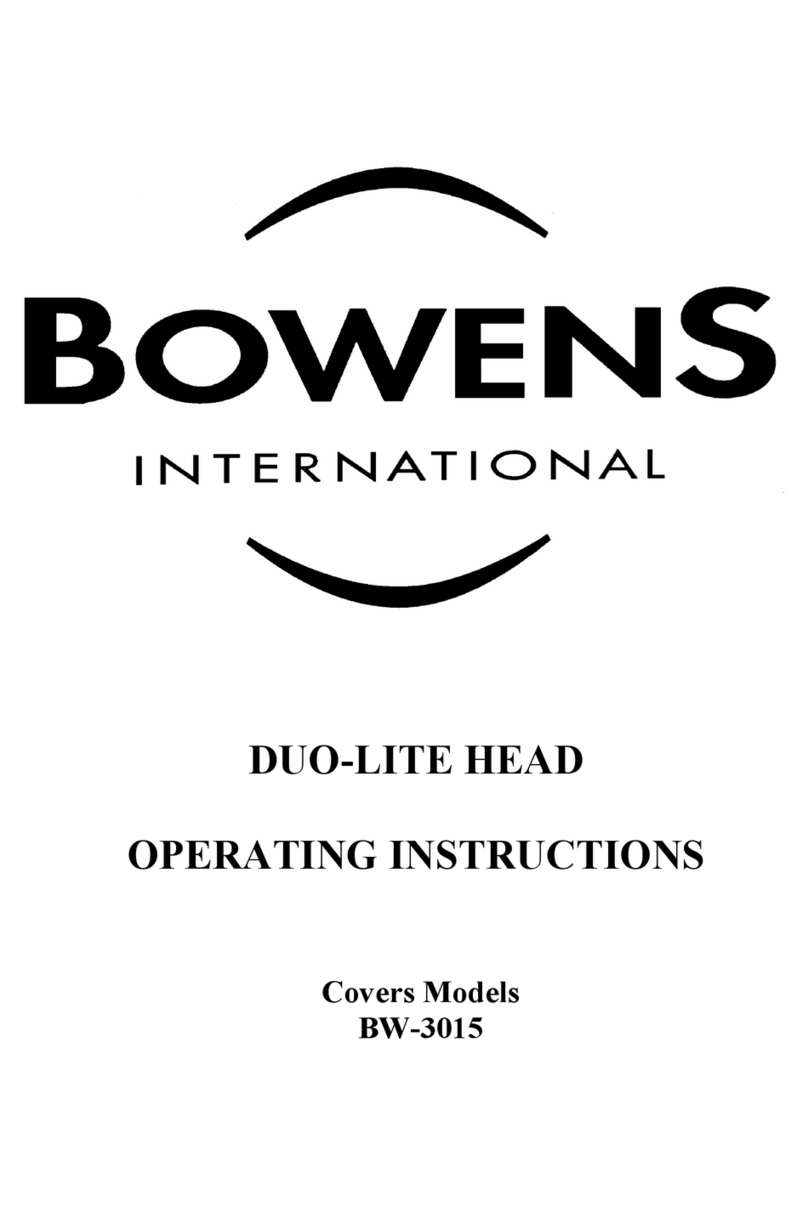
Bowens
Bowens DUO-LITE HEAD Operating installations

ecolight
ecolight UC1073-WHG-16LF0-E quick start guide
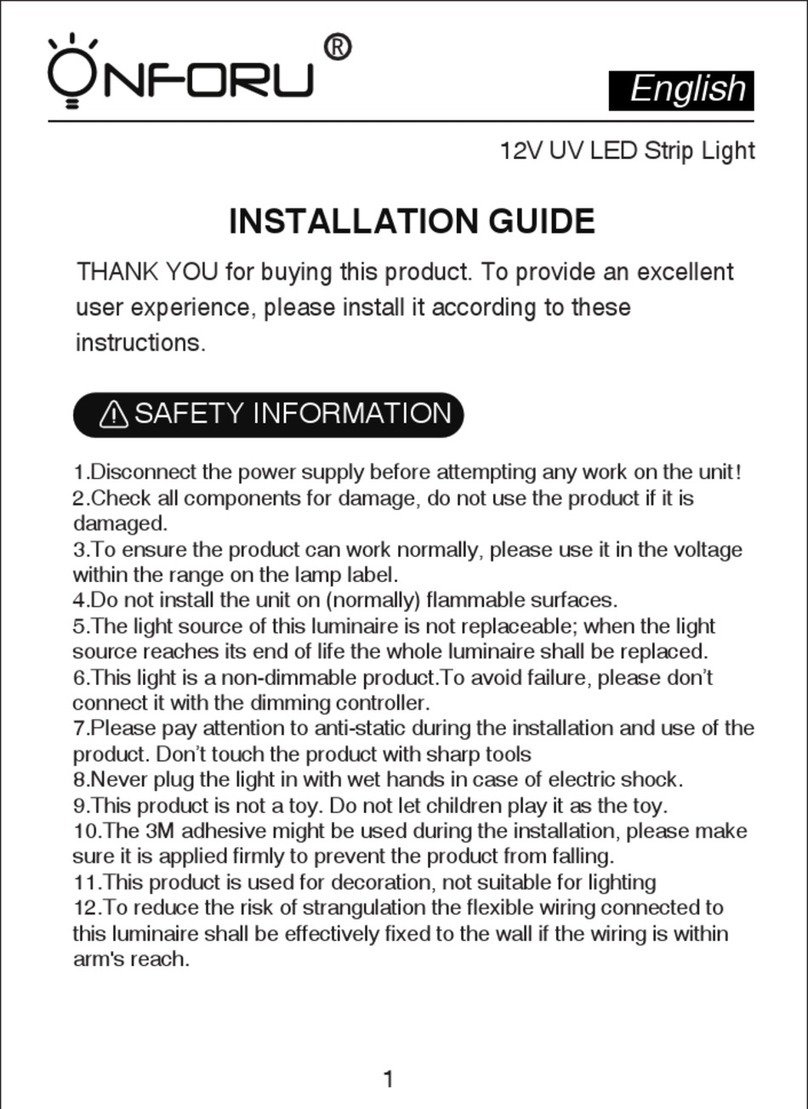
ONFORU
ONFORU DT5UV installation guide

Martin Professional
Martin Professional Exterior 600 user manual
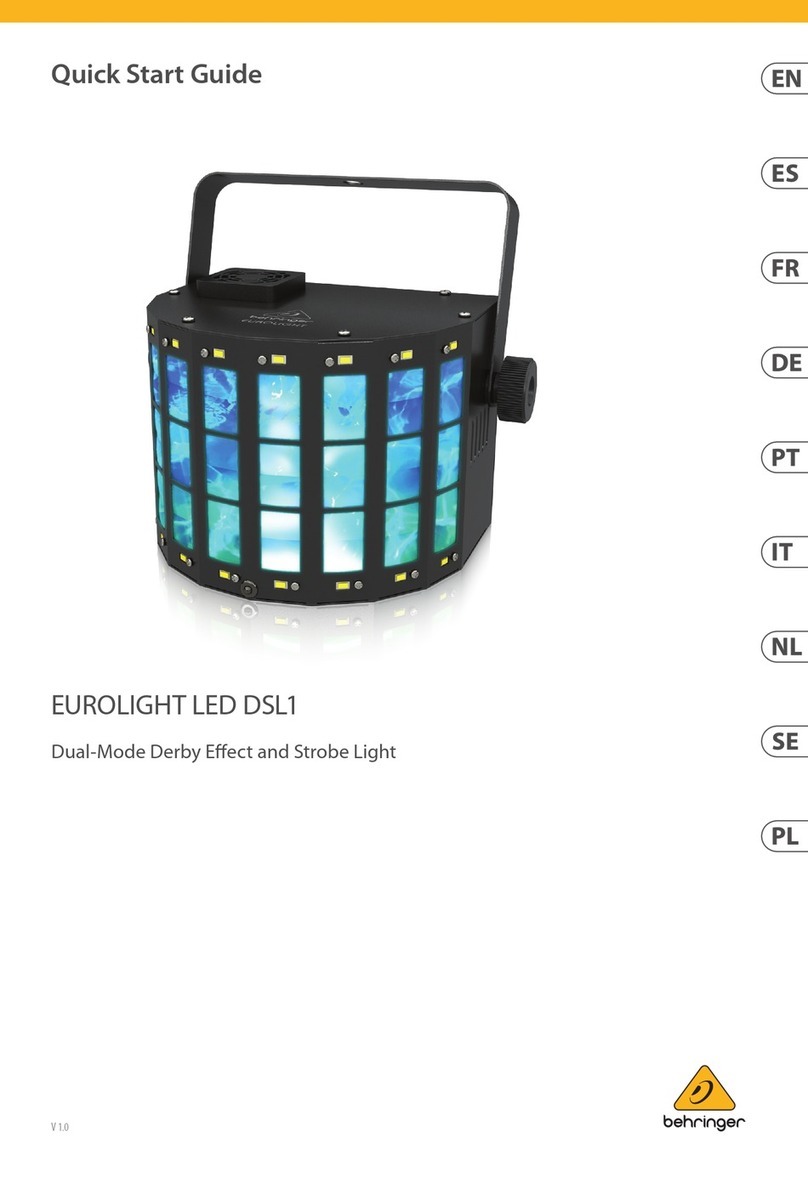
Behringer
Behringer EUROLIGHT LED DSL1 quick start guide
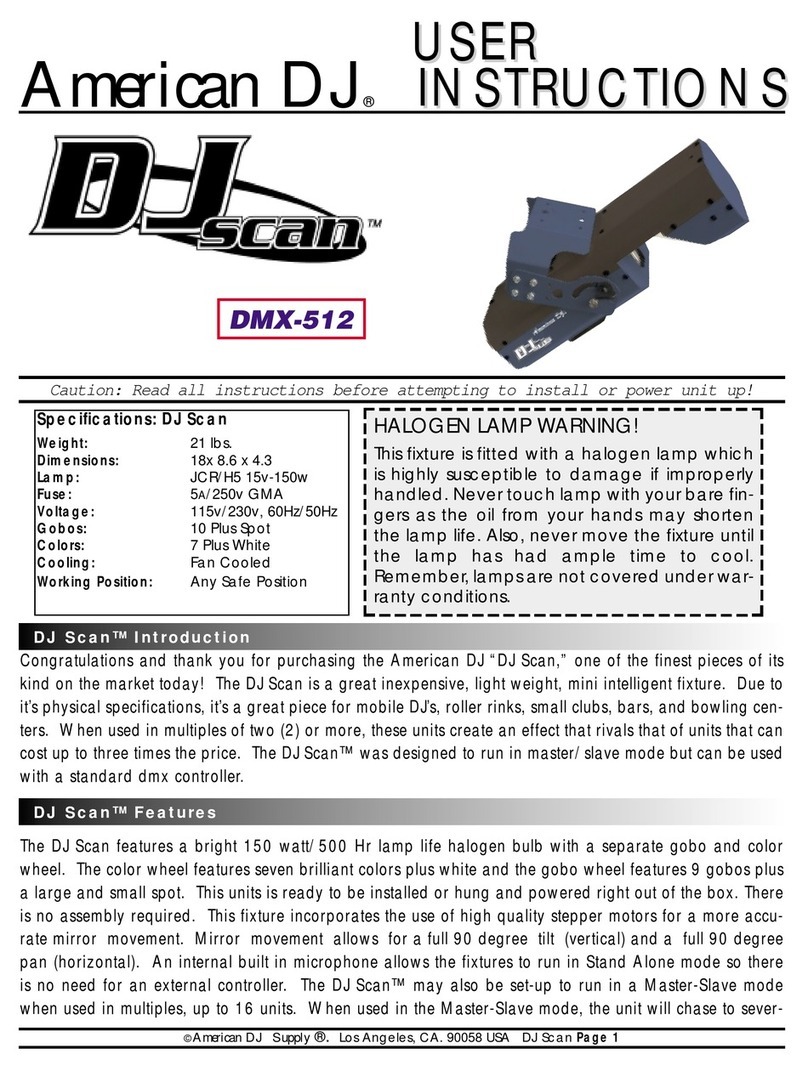
American DJ
American DJ DJ SCAN User instructions

